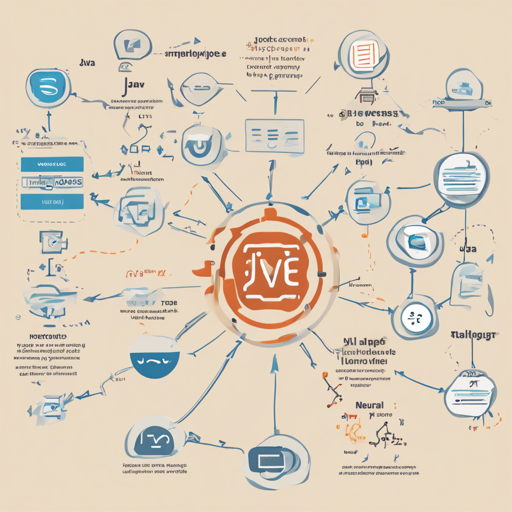In this article, we will explore how to implement the Word2Vec algorithm using Java. This advanced neural network model is essential for converting words into vector representations. Whether you are aiming to enhance a machine learning project, tackle natural language processing tasks, or develop an AI application, understanding Word2Vec is a must!
Getting Started
To kick things off, you’ll need the correct environment set up to run the Java code that implements the Word2Vec algorithm. Below is a simple breakdown of how to structure your Java program using the code provided in the README.
package com.kuyun.document_class;
import java.io.*;
import java.util.List;
import org.ansj.domain.Term;
import org.ansj.splitWord.analysis.ToAnalysis;
import com.alibaba.fastjson.JSONObject;
import com.ansj.vec.Learn;
import com.ansj.vec.Word2VEC;
import love.cq.util.IOUtil;
import love.cq.util.StringUtil;
public class Word2VecTest {
private static final File sportCorpusFile = new File("corpusresult.txt");
public static void main(String[] args) throws IOException {
File[] files = new File("corpussport").listFiles();
try (FileOutputStream fos = new FileOutputStream(sportCorpusFile)) {
for (File file : files) {
if (file.canRead() && file.getName().endsWith(".txt")) {
parserFile(fos, file);
}
}
}
Learn lean = new Learn();
lean.learnFile(sportCorpusFile);
lean.saveModel(new File("modelvector.mod"));
Word2VEC w2v = new Word2VEC();
w2v.loadJavaModel("modelvector.mod");
System.out.println(w2v.distance());
}
private static void parserFile(FileOutputStream fos, File file) throws FileNotFoundException, IOException {
try (BufferedReader br = IOUtil.getReader(file.getAbsolutePath(), IOUtil.UTF8)) {
String temp;
JSONObject parse;
while ((temp = br.readLine()) != null) {
parse = JSONObject.parseObject(temp);
parseStr(fos, parse.getString("title"));
parseStr(fos, StringUtil.rmHtmlTag(parse.getString("content")));
}
}
}
private static void parseStr(FileOutputStream fos, String title) throws IOException {
List parse2 = ToAnalysis.parse(title);
StringBuilder sb = new StringBuilder();
for (Term term : parse2) {
sb.append(term.getName());
}
sb.append(" ");
fos.write(sb.toString().getBytes());
fos.write("\n".getBytes());
}
} Understanding the Code
This code represents a crucial step in your NLP project, like preparing ingredients for a gourmet dish. Each part of the code contributes to transforming and processing text into a structured format that can create word embeddings.
Code Breakdown
- File Operations: Like gathering fresh, quality vegetables from a market, you collect text files from the specified directory.
- Parsing the Files: Just as you chop the ingredients into bite-size pieces, the code reads and parses each line in the text file into manageable objects.
- Learning the Model: The learned model is akin to marinating your dish – it allows flavors (in this case, word relationships) to develop over time.
- Outputting the Vectors: Finally, you serve your gourmet dish! The model vector outputs distance, showing how closely related different words are in the created vector space.
Troubleshooting
If you encounter any issues while implementing this code, consider the following troubleshooting ideas:
- Make sure all dependencies are properly included and up-to-date. Missing libraries can lead to runtime errors.
- Check the file paths to ensure you’re reading the correct files. Incorrect paths will lead to
FileNotFoundException. - Ensure your input files are formatted correctly to avoid parsing errors.
For more insights, updates, or to collaborate on AI development projects, stay connected with fxis.ai.
Final Thoughts
At fxis.ai, we believe that such advancements are crucial for the future of AI, as they enable more comprehensive and effective solutions. Our team is continually exploring new methodologies to push the envelope in artificial intelligence, ensuring that our clients benefit from the latest technological innovations.

